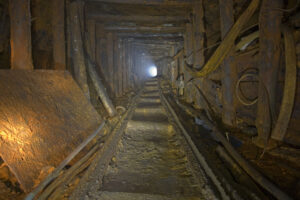By some estimates, mining waste has polluted the headwaters of 40 percent of the West’s watersheds. Forest Service Chief Dale Bosworth says that cleaning up as many as 38,000 abandoned mines on national forests is a high priority, but certainly not one that his agency can tackle on its own.
Ironically, the Superfund law has made cleanup efforts even more difficult by discouraging private entities from attempting any cleanup on their own land. One provision of the law makes anyone who cleans or remines a mine waste site liable for all the pollution.
Drainage from old mines is a chronic problem in many western communities. Combined with a drought that is now in its sixth year and a population boom in the Rocky Mountain West, the struggle for clean water sources has only worsened. Acidic run-off from thousands of waste piles continues to drain into nearby streams, carrying with it heavy loads of zinc, lead, cadmium, and sometimes mercury. These heavy metals can end up in fish, making them potentially dangerous for human consumption. Fishing advisories are not uncommon on western streams.
A possible solution to the problem has been devised by the Forest Service, Trout Unlimited, Utah’s Snowbird ski resort, and Tiffany & Company. Yet this public-private partnership hinges on a liability waiver from the Environmental Protection Agency.
With that waiver in hand, the four groups will move forward with cleanup of the American Fork Canyon. Most of the pollution originates from a single mine on the Snowbird property. The chairman of Tiffany had heard of the project and was willing to kick in $100,000 to help Trout Unlimited hire an engineer to speed the cleanup process. Initially begun in 1999 on Forest Service land, the project accomplished little without working at the pollution source located on adjacent land belonging to the private resort.
Bosworth is hopeful that similar projects will follow. Because of the patchwork nature of land ownership with private and government lands closely intermingled, such public-private partnerships are the only feasible way to clean up thousands of old mining sites. While these mines flourished from about 1870 to 1920, now their only contribution is acidic waste to mountain streams.
 Associated Press
Associated Press


